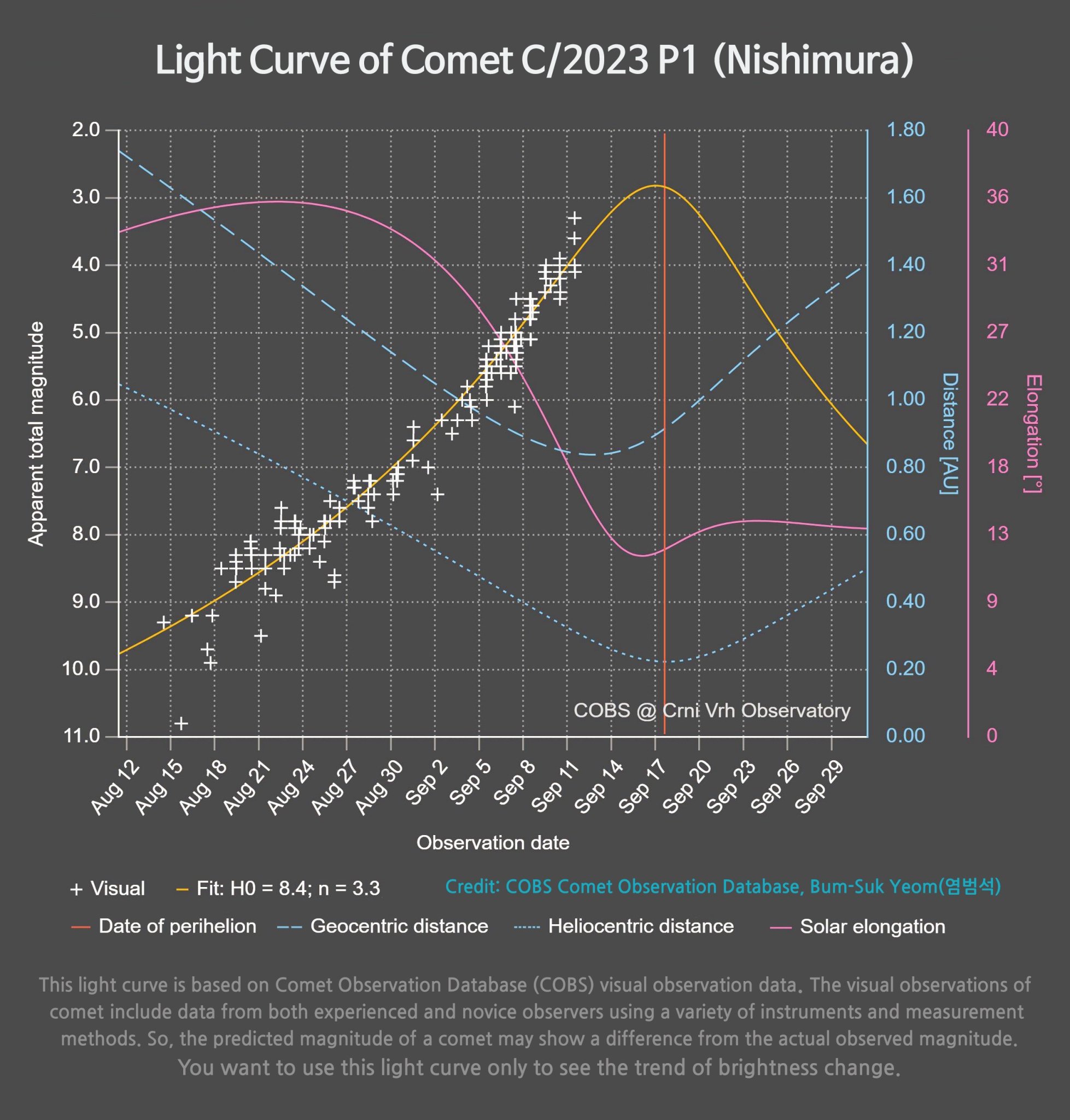[천문정보] C/2023 P1 (니시무라) 혜성의 밝기 변화 및 예상 곡선 |
|||||
|---|---|---|---|---|---|
| 작성자 | 염범석 | 등록일 | 23.09.14 | 조회수 | 343 |
| 첨부파일 | |||||
|
C/2023 P1 (니시무라) 혜성의 광도 곡선. Light Curve of Comet C/2023 P1 (Nishimura). http://cometsky.com/astronews/comet_c2023p1_lc_230914_bsyeom.jpg
https://www.minorplanetcenter.net/mpec/K23/K23P87.html
Discovery Date : 12 August 2023 UT Discovery Magnitude : 10.4 mag Discoverer : Hideo Nishimura (Kakegawa, Japan) Perihelion : 17 September 2023 ― 0.225 AU Closest approach to Earth: 12 September 2023 ― 0.292 AU
니시무라 (C/2023 P1) 혜성은 9월 15일부터 20일까지 초저녁 서쪽 하늘에서 관측이 가능합니다. 하지만 고도가 낮아서 관측이 쉽지는 않습니다. 이때 혜성의 밝기는 3~4등급 정도로 매우 밝은 편입니다. 서쪽 하늘이 트인 곳이라면 관측이 가능할 수 있습니다.
This light curve is based on Comet Observation Database (COBS) visual observation data. The visual observations of comet include data from both experienced and novice observers using a variety of instruments and measurement methods. So, the predicted magnitude of a comet may show a difference from the actual observed magnitude. Therefore, you want to use this light curve only to see the trend of brightness change.
이 광도 곡선은 COBS의 안시 관측 데이터를 사용한 것입니다. 혜성의 안시 관측은 다양한 장비들과 측정 방법들을 사용하여 숙련된 관찰자와 초보 관찰자 모두의 자료를 포함합니다. 그래서 혜성의 예상 등급은 실제로 관측했을 때의 등급과 차이를 보여줄 수도 있습니다. 따라서 당신은 이 광도 곡선을 단지 밝기 변화의 경향성을 보는 데 사용하기 바랍니다.
Image Credit: COBS Comet Observation Database, Bum-Suk Yeom (염범석).
|
|||||
| 이전글 | [천문정보] C/2023 P1 (니시무라) 혜성의 이동 경로 |
|---|---|
| 다음글 | [천문정보] 2023년 9월의 천체 관측 대상들 |

